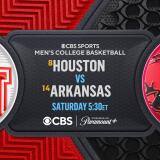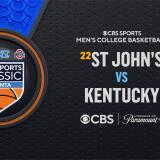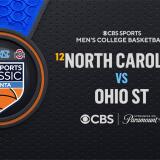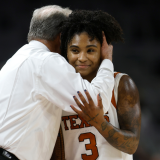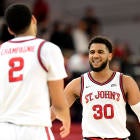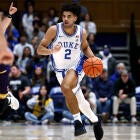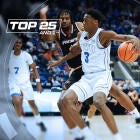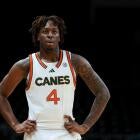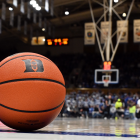Ranking college basketball's top 20 transfers of the 2020 recruiting cycle
Here are the top 20 transfers to watch coming out of the 2020 recruiting cycle
When the NCAA Division I Council opted last month against implementing comprehensive new transfer legislation for the 2020-21 academic year, it likely stopped a second wave of entries into college basketball's transfer portal. The council's vote called for more time to develop the new rules to govern what will be a substantial change to college sports: allowing athletes in all sports to transfer once without having to sit out for a season.
The change appears destined to come eventually -- maybe even by the 2021-22 season -- but it won't go into effect this season, and that almost assuredly means that some players who were thinking about entering the transfer portal now will choose to stay put for at least another season.
Even still, dozens of high-major caliber players opted to transfer this offseason. Those who can't graduate by the end of this summer will need waivers if they are going to suit up for the 2020-21 season. But whether they play this season or in 2021-22, here are the top-20 who are on the move.
Note: Graduate transfers are not included and are listed separately here.
1. Olivier Sarr
Old school: Wake Forest | New school: Kentucky
If Sarr is awarded a waiver to play immediately, he will likely be the most impactful transfer in college basketball for two reasons. First and foremost, the 7-footer averaged 13.7 points and nine rebounds as a junior at Wake Forest and would be a day-one starter for the Wildcats. Sarr's impact on a drastically remade Kentucky roster that will otherwise be reliant on freshmen would be immeasurable. He might be the difference between a first weekend exit from the NCAA Tournament for the Wildcats and a deep run.
Secondly, his case for a waiver could be a precedent-setter in this year's transfer cycle. Because of Kentucky's visibility in the sport and the impact Sarr could have, folks around college basketball will be paying close attention to his case. Will the coaching change at Wake Forest and Sarr's insistence that he'll turn pro if his waiver for immediate eligibility is denied be enough to get him eligible? If so, it will give other players an example to use in pleading their case for immediate eligibility. But if Sarr receives immediate eligibility and other players coming from schools that have gone through coaching changes do not, buckle up. The backlash and accusations of NCAA favoritism for Kentucky would be immense.
2. Marcus Santos-Silva
Old school: VCU | New school: Texas Tech
He's undersized at 6-7. But Santos-Silva still managed to block 1.3 shots per game while leading VCU in scoring as an absolute workhorse down low last season. After declaring for the draft in early April, he announced his plan to transfer instead and is headed to Texas Tech. Though he's not a threat from the outside, Santos-Silva averaged 12.8 points and 8.9 rebounds per game in the Atlantic 10. If he can graduate this summer, he'll be an immediate starter for a Red Raiders team looking to return to the Final Four glory it experienced in 2019.
3. LJ Figueroa
Old school: St. John's | New school: TBA
Figueroa is leaving St. John's after averaging 14.5 points on 37.3% 3-point shooting in two seasons as a starter. But even more appealing than his offensive game is the fact that he is a two-player. The former junior college transfer averaged 1.9 steals per game over his two seasons with the Red Storm. He was a top-100 prospect in the 2017 high school class and could end up as an impact player on the national scene depending on where he ends up playing his final season.
4. Andrew Nembhard
Old school: Florida | New school: TBA
After two years as a starter at Florida, the 6-5 guard became one of the hottest remaining commodities in the transfer portal when he announced on May 31 that he is leaving the Gators' program. Nembhard averaged 11.8 points and 5.6 assists as a sophomore in the 2019-20 season. He could be an NBA-caliber prospect if he can improve his 3-point shooting.
5. Landers Nolley
Old school: Virginia Tech | New school: Memphis
If Nolley does not receive a waiver for immediate eligibility, it would be a particularly tough pill to swallow for him and for Memphis. That's because Nolley already took one redshirt during his first year at Virginia Tech. It would be tough for Memphis as well after the Tigers took a hit when Jalen Green opted for the G-League over playing college basketball. But whether it's this season or the season after, Nolley will be a force for Memphis on the wing, which is where he wants to play after he was pegged as a stretch four at Virginia Tech. The ACC All-Freshman performer has an NBA build and the two-way chops to match it.
Landers Nolley II ➡️ @Memphis_MBB@NolleyLanders is signed and he's bringing buckets. #GoTigersGo pic.twitter.com/IqbtjMxLxF
— Stadium (@Stadium) April 20, 2020
6. D.J. Carton
Old school: Ohio State | New school: Marquette
The No. 34 overall prospect in the 2019 recruiting class lived up to the billing in 20 games as a freshman at Ohio State this season before leaving the program in January. At Marquette, he will be part of the daunting task of helping the Golden Eagles move on from the graduation of the Big East's all-time leading scorer Markus Howard. Carton's game appears up to the task after he averaged 10.4 points per game and hit 40% of his 3-pointers while mostly coming off the bench in his stint with the Buckeyes.
7. Kobe King
Old school: Wisconsin | New school: TBA
After averaging 10 points per game in 19 starts as a junior, King announced midseason that he would leave the Wisconsin program. At first, he was headed to a new spot in the Big Ten to be part of a dramatically remade roster at Nebraska. But Nebraska coach Fred Hoiberg announced on June 19 that King won't be suiting up for the Cornhuskers after all.
8. Liam Robbins
Old school: Drake | New school: Minnesota
Robbins needed a year at prep school to lose weight and attract college interest after high school, but his rise has been meteoric since he got on the right track. The 7-footer will now get to test his game in the sport's toughest league after a breakout sophomore season in the Missouri Valley Conference. The Iowa native averaged 14.1 points, 7.1 rebounds and 2.9 blocks this season. If his game continues progressing on its current trajectory, he'll be a force in the Big Ten in his remaining two seasons of eligibility.
Went through tape on Minnesota's transfer commit Liam Robbins. As impressive as any transfer prospect in the country. Impressed with his touch, hands and post work. Effective over either shoulder. Late bloomer that didn't have a scholarship offer coming out of high school. pic.twitter.com/0r2AnRLqTc
— Evan Daniels (@EvanDaniels) April 9, 2020
9. Mac McClung
Old school: Georgetown | New school: Texas Tech
The offensive firecracker who carried a heavy load as a sophomore for Georgetown when healthy is headed to Texas Tech after two seasons at Georgetown. McClung is a good athlete and capable scorer, but he reportedly wants to play more point guard in order to bolster his NBA profile. That will require a fairly drastic change in approach for McClung after he was a score-first guard for the Hoyas. In that sense, sitting out a season could be beneficial for McClung's development if he does not receive a waiver for immediate eligibility. If he can make the transition to distributor and up his shooting efficiency, he could prove to be one of the league's best guards.
10. Alan Griffin
Old school: lliinois | New school: Syracuse
Griffin is headed back to his home state to try and build on the progress he demonstrated as a sophomore. The 6-5 guard averaged 8.9 points and 4.5 rebounds in just 18.1 minutes per game for the Illini after playing sparingly as a freshman. He's a good outside shooter (41.6% from 3-point range this season) and has a great pedigree as the son of former NBA veteran and current Raptors assistant Adrian Griffin. If eligible immediately, Griffin will be tasked with helping the Orange replace the production of Elijah Hughes, who led the ACC in scoring this season.
11. Jamarius Burton
Old school: Wichita State | New school: Texas Tech
Burton improved his efficiency as a scorer this season for Wichita State as he averaged 10 points per game on 38.1% 3-point shooting. He's also serviceable as a distributor and rebounder and versatile enough defensively to guard multiple positions. It's unlikely that he'll blossom into an All-Big 12 performer. But the former unheralded prospect should make an immediate impact on a Texas Tech team flourishing under Chris Beard.
"He is one of the hardest workers and most disciplined about his approach and his body that I've been around in 23 years."
— Marc Davis (@marcdavissports) November 19, 2019
Mike Rhoades on Marcus Santos-Silva #VCU @NBC12 pic.twitter.com/O44ndKN6IC
12. David DeJulius
Old school: Michigan | New school: Cincinnati
It's worth wondering whether DeJulius still would have transferred if he'd known that Josh Christopher was going to pick Arizona State over Michigan and that Isaiah Todd was going to turn pro instead of becoming a Wolverine. Nonetheless, the former four-star guard is headed to a spot where he should be able to shine. Cincinnati is losing a good bit of production from its 2019-20 roster. That opens the door for DeJulius, who averaged 7 points, 2.4 rebounds and 1.5 assists while hitting 36.1% of his 3-pointers off the bench for Michigan last season.
13. Ty Brewer
Old school: Southeast Louisiana | New school: East Tennessee State
He's 6-7, is a great rebounder and can hit outside shots. What's not to like about Brewer? His production soared as a sophomore as he averaged 14.9 points, 7.7 rebounds and 1.5 steals per game. Now he'll get to be a key piece for an ETSU team looking to recover from the loss of coach Steve Forbes and several key players. Don't be surprised if he is one of the most productive players in the Southern Conference once he's eligible.
MBB: TY BREWER SLAMS IT DOWN!!!!!!!!!! #LionUp
— #LionUp (@LionUpAthletics) March 15, 2019
Tune in: https://t.co/kstchN5czw pic.twitter.com/YK7jILsOep
14. Chaundee Brown
Old school: Wake Forest | New school: Michigan
Brown is a physical wing who is efficient at scoring inside the arc and a solid rebounder. His case for immediate eligibility is the same as Sarr's: Wake Forest underwent a coaching change from Danny Manning to Steve Forbes late in the coaching change cycle. Brown would be a welcome addition to the 2020-21 rotation at Michigan after the Wolverines missed out on Todd and Christopher late in the recruiting cycle.
15. DeAndre Williams
Old school: Evansville | New school: Memphis
The 6-9 forward will have two seasons to play at Memphis once he's eligible. Williams has an intriguing case for a waiver considering the upheaval that occurred during his lone season at Evansville. After a momentous upset at Kentucky, coach Walter McCarty was placed on leave and ultimately fired. The Purple Aces then played under an interim coach and a new head coach in the second half of the season. It remains a question how Williams' stretch forward capabilities will translate to a higher level. But he averaged 15.2 points, 6.9 rebounds and made 45.5% of his 3-pointers last season, and the Tigers will give him ample opportunity to play an essential role after the departure of AAC Player of the Year Precious Achiuwa.
16. Both Gach
Old school: Utah | New school: Minnesota
The 6-6 wing was rated a four-star prospect in the 2018 class by 247Sports and emerged as a key player for Utah last season. He'll have two seasons to play at his new school and should be an impact player. He still needs to develop consistency. But he had some big games last season and averaged 10.7 points, 3.6 rebounds and 2.9 assists.
17. Alex O'Connell
Old school: Duke | New school: Creighton
If O'Connell can regain the 3-point shooting stroke he showed as a freshman at Duke, he'll be a perfect fit in a Creighton system that is dependent on the outside shot. Regardless, he should be able to play a larger role at Creighton than the one he played for three seasons at Duke. Perhaps that will be the impetus that finally allows the former top-100 recruit to shine.
18. Luther Muhammad
Old school: Ohio State | New school: Arizona State
Muhammad will be joining an Arizona State roster with plenty of talent whenever he becomes eligible. But he's proven to be an effective 3-point shooter and quality defender through his first two seasons of college basketball and should be able to play a role for a Sun Devils program that will have Pac-12 title aspirations.
19. Trey Murphy
Old school: Rice | New school: Virginia
He's not a big name, and he likely won't play a starring role at Virginia once he's eligible. But at 6-8 and with a career 3-point shooting percentage of 39% on 5.8 attempts per game, Murphy will be a useful player for the Cavaliers. Don't be surprised if he ends up as a high-caliber role player for a team that wins 25-plus games in the future. Murphy has two seasons of eligibility remaining.
20. Javon Freeman-Liberty
Old school: Valparaiso | New school: DePaul
The 6-3 guard developed in to the Missouri Valley Conference's leading scorer as a sophomore and will have an opportunity to play a leading role at DePaul as well. But even if the transition to the Big East blunts his offensive impact, Freeman-Liberty's career average of two steals per game suggests he will still be a productive player in his final two college seasons.




